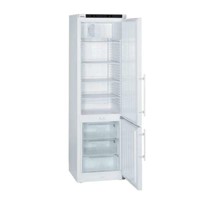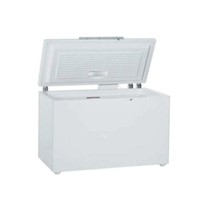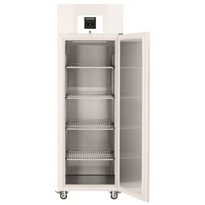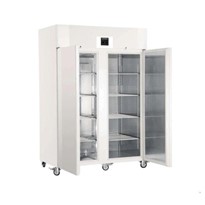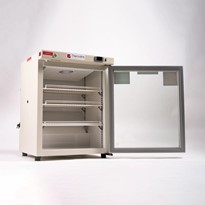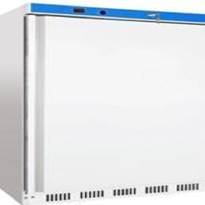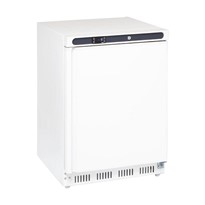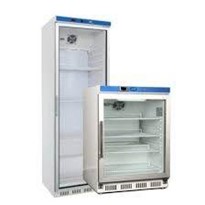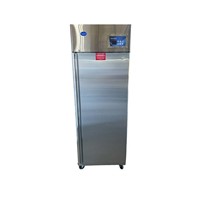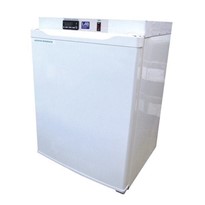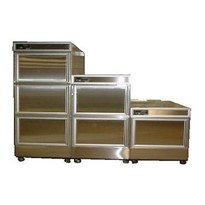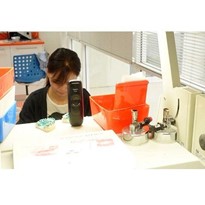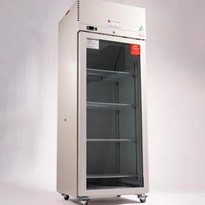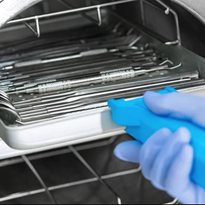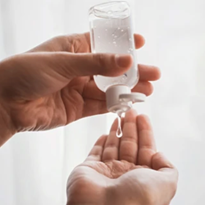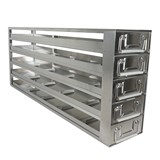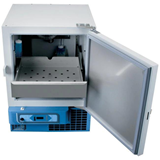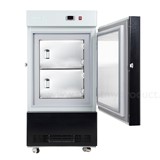This post quickly describes differences between household and laboratory refrigerators and freezers. Then we’ll look into the many feature options available and help you select the model that meets your requirements.
What’s The Difference Between Household and Lab Refrigerators & Freezers?
Laboratory refrigerators and laboratory freezers are designed and constructed to meet much stricter standards than typically found in household or commercial units. Pharmaceuticals, blood, and plasma, for example, must be stored within tight temperature ranges to avoid loss of potency or spoilage.
Storing valuable or irreplaceable biological specimens are other examples where temperature control is critical.
The cost (and potential penalties) involved due to improper storage in lab freezers and lab refrigerators provides ample justification for their higher cost.
That’s why temperature control and daily record-keeping are so important.
Specification Guidelines for Lab Refrigerators and Freezers
In the following sections, we’ll take a look at points to consider when purchasing a lab refrigerator or lab freezer.
Temperature Control and Display is a good place to start.
More than likely your household fridge will have a dial inside the cabinet offering a few temperature options ranging from warmest to coldest to off. This is not precise enough for most lab and healthcare facilities.
Laboratory refrigerators typically operate from 2°C to 10°C and freezers from -10°C to -25°C although there are exceptions based on models. Low-temperature freezers again depending on models are available for temperatures to – 25°, -30° and -40°C. Ultra-low temperature freezers can be set from -50° to -86°C.
A suggestion: If you are buying a lab freezer choose one that delivers the temperature you need because the lower the temperature the more power it requires.
More preferred are the highly sophisticated digital LED display microprocessor temperature controllers. Top-line models such as the Euro Chill, series use the more precise programmable logic controls, which is the best choice to maintain the absolute minimum temperature drift. High-end models also allow setting temperatures to one decimal place.
Most of today’s lab units are designed to display internal temperatures outside the unit. This means that technicians don’t have to open the door (allowing ambient air to enter) to check and record the temperature.
This brings us to a related subject.
Temperature Recording and Temperature Alarms
The CDC recommends twice daily manually checking and recording the temperature of lab freezers and refrigerators. While this may seem redundant in view of alarming systems, automated devices may malfunction. It has happened.
Alarming is an absolutely critical feature when storing valuable vaccines, pharmaceutical, and biologicals. Even the most basic lab refrigerator and lab freezer can be fitted with optional digital thermometer alarms consisting of an internal sensor inserted in a glycol bottle and connected by the wire passing over the hinge-side door gasket or through optional sensor access ports to an external control and display module.
The purpose of the glycol is to “insulate” the sensor from responding to quick temperature fluctuations such as when the door is opened.
The next step up is a built-in digital audio and visual high/ low-temperature alarm with remote alarm contacts to alert personnel elsewhere in the facility.
Optional USB temperature data loggers with built-in alarms are available to automatically record interior temperatures at user-programmable intervals using NIST traceable probes. To read the results, simply plug the USB flash drive into a computer and transfer data to a PC for review and archiving.
Manual and Auto Defrost Lab Refrigerators and Lab Freezers
There are important distinctions between manual and auto defrost units.
- Auto-defrost units are generally favored by laboratories and pharmacies. Most models have fans that circulate chilled air throughout the unit to create a uniform internal temperature. Some models allow users to control the frequency and duration of the defrost cycle. Filling the unit with a product or water bottles helps reduce temperature fluctuations due to compressor cycling and door openings.
- Manual-defrost scientific refrigerators cool by circulating refrigerant through tubing in the walls. The internal temperature differential causes the cold air to circulate. Because there is no fan-forced air circulation in manual-defrost refrigerators they are favored for applications such as experiments in open containers where it is not permissible for the product to dry out due to moving air.
- Auto-defrost scientific freezers are preferred by most labs for convenience. They are self-maintaining and don’t require the availability of a second freezer during defrost cycles. Some auto-defrost freezers are equipped to provide user control over the defrost cycle.
- Manual-defrost scientific freezers work on the same principal as manual-defrost refrigerators. Ice buildup on interior walls and on the condenser must be removed on a planned basis that includes providing alternative freezer space for the contents during the defrosting operations.
What About Combination Lab Refrigerator/Freezers?
As a general rule, a stand-alone refrigerator and stand-alone freezer will maintain better temperature control than a combination refrigerator/freezer with a single condenser. This should be considered when tight temperature control is important.
BUT: Limited space availability and the need to provide both refrigeration and freezing capability suggest a combination scientific refrigerator-freezer unit. Here is a brief description of three design configurations:
- The best temperature control is offered by a combination lab refrigerator/freezer where each compartment has its own compressor, thermostat, and external door. This type of combo model is recommended when storing products that are highly temperature sensitive.
- A lower-cost option for storing less temperature-sensitive products is a laboratory refrigerator/freezer, with only one compressor for both compartments. The two compartments have separate external doors and may have separate temperature controls. Because cold air from the freezer compartment flows via a vent into the refrigerator compartment the temperatures of the two compartments are not completely independent.
- When space is tight, consider an under counter or countertop fridge/freezer unit. These are generally configured as a refrigerator compartment that contains an internal freezer compartment with a door. In this case, the freezer compartment does not have its own thermostat.
Where to Place Your Lab Refrigerator and Freezer
This is a take-off on measure twice, cut once – the mantra of professional carpenters. Or on the guy who built a boat in the basement to find out, it wouldn’t fit through the door.
Here are considerations to keep in mind when purchasing lab refrigerators and freezers:
- Locating the unit. Be certain that enough physical space is available and that there is proximity to a power outlet – dedicated is preferable; extension cords are not recommended.
- Under counter vs. freestanding units. Built-in under-counter units do not require space at the sides and back because they are vented from the front. Freestanding units generally require space at the sides and top for air circulation. Freestanding units are finished on the sides as well as the top and front. Depending on models, built-in units may or may not be finished on the sides and top.
- Side, top and rear clearances for full-size units. Manufacturers’ specifications indicate these requirements. Some designs, for example, require a few inches while other can be snugged against side cabinets and rear walls.
- Will the under counter lab refrigerator or freezer fit in existing or planned casework? If so is there enough clearance to allow the equipment to function properly? Allow enough space for the unit to be moved for servicing.
- Local environment. Avoid placing refrigerators and freezers near heating ducts or in areas of direct sunlight.
Optional Lab Refrigerator Equipment
Standard and optional equipment available for scientific refrigerators and freezers varies depending on the manufacturer and model. We’ve commented on various temperature sensing, monitoring, and alarming systems, some of which are classified as optional.
Other options to consider include:
- Casters or levelers vs. legs
- Door locks and other security systems
- Insulated glass vs. solid doors
- Additional shelving
- Drawers and baskets
- Reversed door hinges
- Stainless steel vs. painted exteriors and/or interiors
- Sensor ports to access internal scientific equipment
- Internal electrical outlets


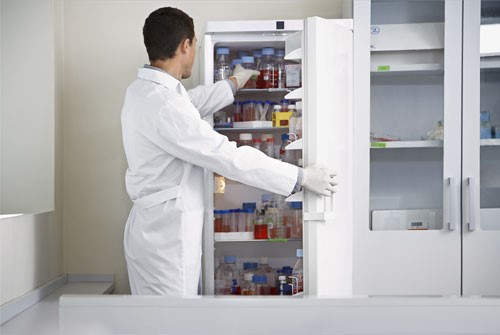

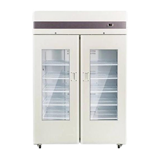
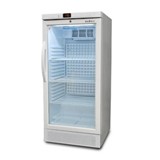
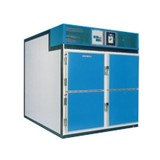
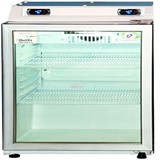
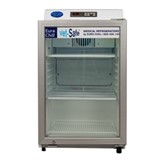



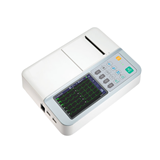
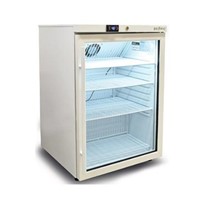


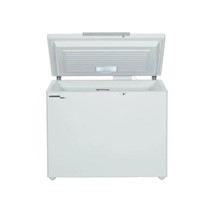
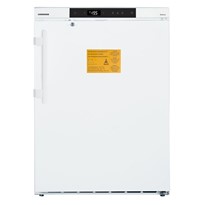
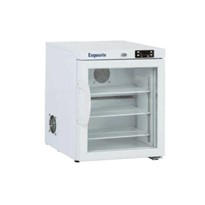

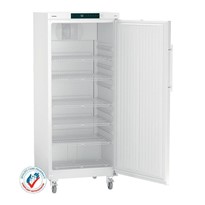
-205x205.jpg)


